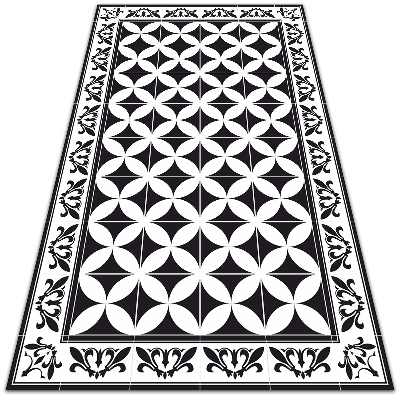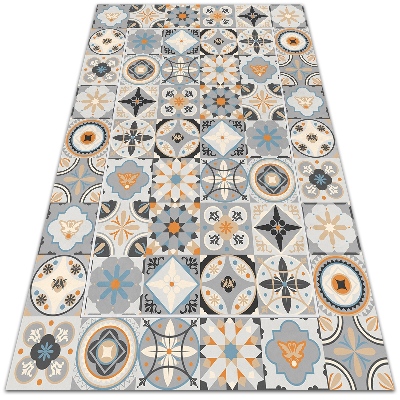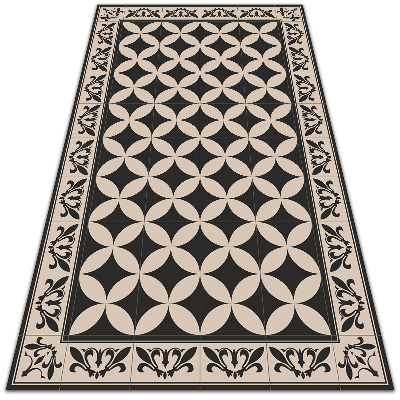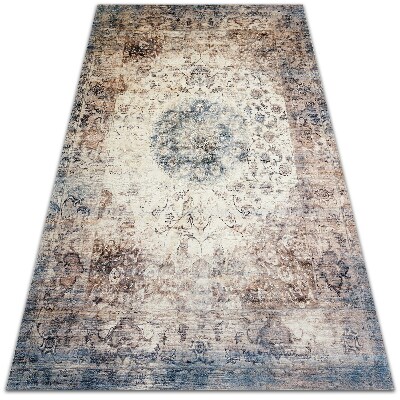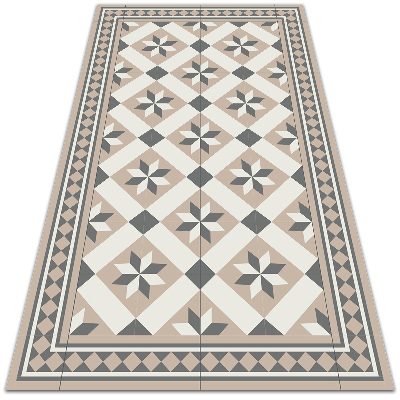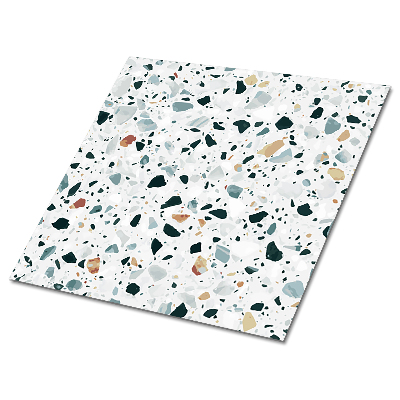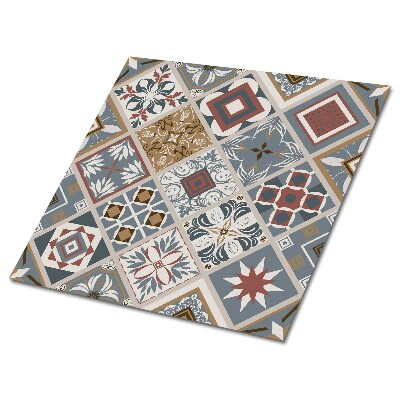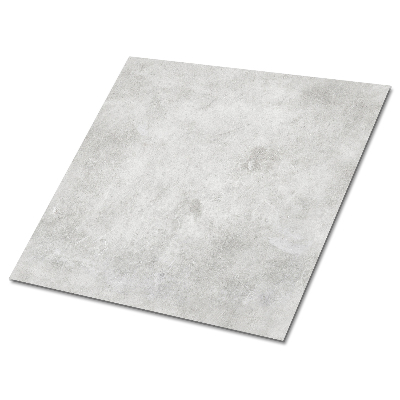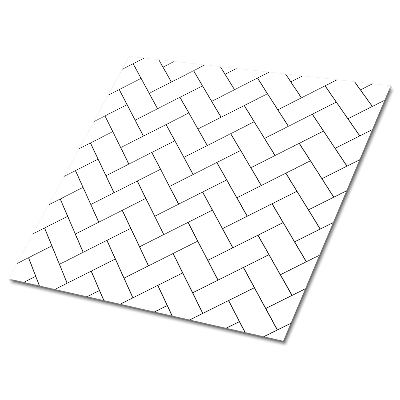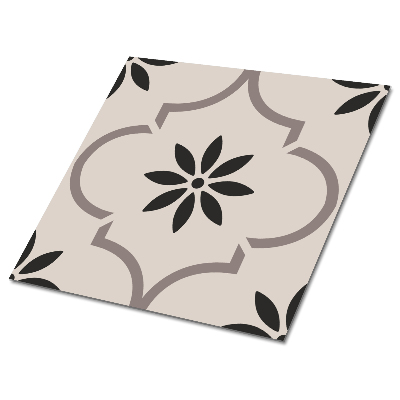The kitchen is one of the most demanding rooms in the entire house. It's where we cook, cut, store food and gather for meals together every day. So it's no surprise that the choice of flooring for the kitchen is a crucial decision, affecting the convenience of use, the aesthetics of the interior and the durability of the surface.
What kind of flooring will work best in the kitchen? Are vinyl panels a better alternative to classic ceramic tiles? Or should you opt for a floor made of natural wood? In this guide we will discuss the most important aspects of choosing the right material for the kitchen, taking into account durability, resistance to moisture, as well as ease of cleaning. We will also hint at what solutions will work well instead of tiles to create a fashionable floor that suits modern interiors.
Ceramic tiles - a classic that works
The kitchen floor should be resistant to mechanical damage, easy to clean and insensitive to moisture. Not surprisingly, ceramic tiles are one of the most frequently chosen materials for the kitchen. Available in countless designs, colors and formats, they allow you to create both classic and modern arrangements.
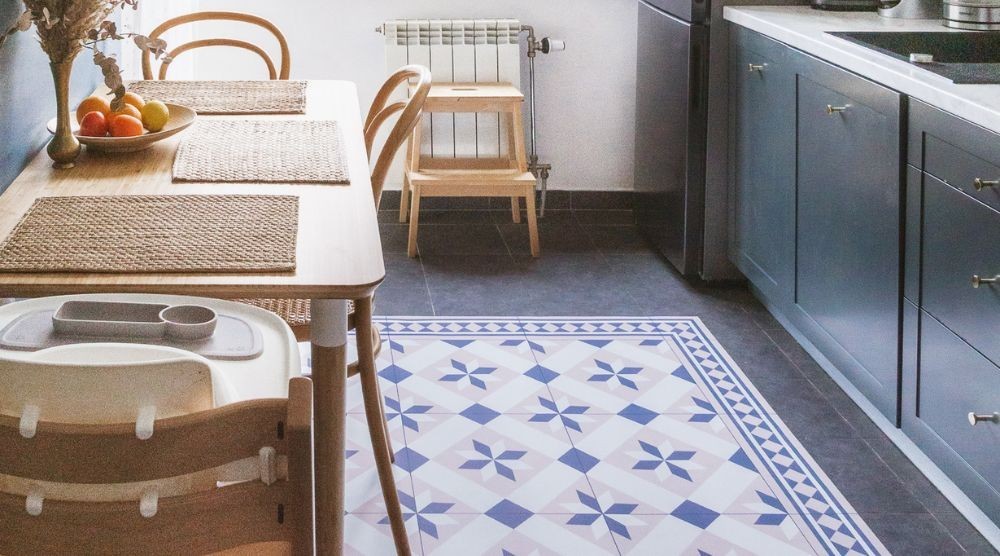
Matte or glossy tiles? Which to choose?
When choosing ceramic tiles, it is worth emphasizing the importance of their finish. Matte tiles are perfect for the kitchen, as they do not attract dust and do not leave visible traces of water drops. Glossy tiles, on the other hand, add elegance to the interior, but require more frequent cleaning and careful use of cleaning products.
Stoneware tiles and large-format tiles - durability and modernity.
Stoneware tiles are increasingly used in modern interiors, as they are extremely resistant to abrasion, UV rays and contact with water. In addition, large-format tiles optically enlarge the space and allow to achieve a smooth surface without many joints, which significantly facilitates the maintenance of cleanliness.
An alternative to cold tiles - vinyl carpets
Although ceramic tiles are among the most durable finishing materials, they can be unpleasantly cold for bare feet. So it's worth thinking about underfloor heating or using vinyl carpets. This is an original solution that works well in kitchens.
Vinyl floor panels and self-adhesive PVC tiles - modernity in practice
If you want a modern floor that is warm to the touch, moisture-resistant and easy to install, vinyl panels or self-adhesive PVC tiles are an excellent choice. This is a solution that is gaining popularity, especially in modern apartments and public buildings.
Why choose vinyl panels for the kitchen?
- Resistance to moisture - thanks to this, the floor lined with vinyl is not damaged even with frequent contact with water.
- Ease of installation - vinyl floor panels do not require specialized tools, and self-adhesive PVC tiles can be installed without glue.
- Durability - flooring made of vinyl panels is resistant to mechanical damage, abrasion and UV rays.
- Design - vinyl panels perfectly imitate wood, concrete and even stone imitations, allowing you to create a fashionable arrangement.
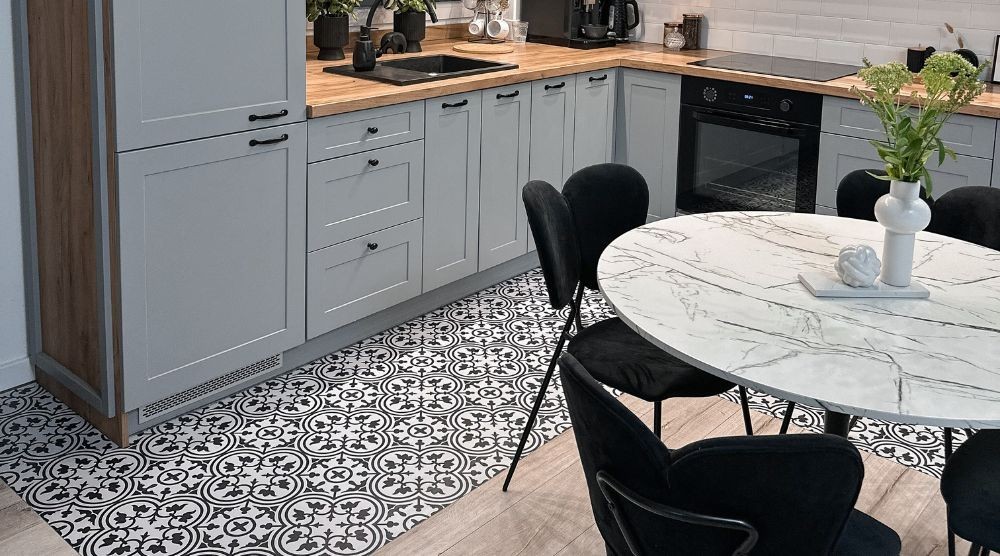
Which vinyl panels to choose?
There are different types of vinyl flooring available in stores. Vinyl flooring is a budget solution, ideal for those looking for a cheap and practical option. On the other hand, click and self-adhesive vinyl panels offer easy installation and durability comparable to traditional tiles.
Importantly, vinyl panels are great for underfloor heating because they conduct heat well, which increases comfort. This is an original solution that makes the kitchen floor pleasant for the feet even in winter.
Wooden floor in the kitchen - is it a good idea?
A floor lined with wood in the kitchen? Although it seems like a risky choice for many, with the right protection it can be both functional and beautiful. Real wood adds warmth and elegance to an interior, and natural materials always look timeless.
What kind of wood is suitable for the kitchen?
Exotic woods, such as teak or merbau, are naturally resistant to moisture, so they are perfect for a demanding room like the kitchen. Wooden flooring made of oak or ash is equally suitable, provided that it is coated with a special clear varnish that protects against moisture and dirt.
Advantages and disadvantages of a wooden floor in the kitchen
- Stylish look - a floor made of wood fits into a variety of arrangements, from rustic to modern.
- Natural character - wood is one of the most durable finishing materials, which ages beautifully.
- Warmth and comfort - unlike tiles, wood lined flooring is not cold to the touch.
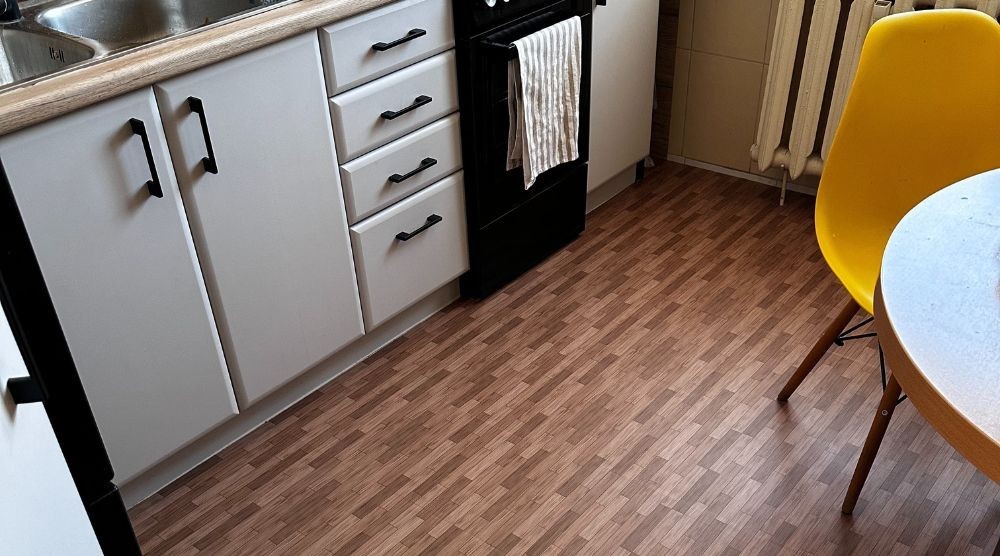
- Sensitivity to moisture - wood requires proper impregnation so that it does not swell and deform when exposed to water.
- Risk of mechanical damage - heavy objects, such as a dropped glass vessel, can leave a visible mark on the surface of the wood.
- Requires proper preparation - before installation, make sure the surface is perfectly even and choose the right varnish or protective oil.
If you want the effect of a wooden floor in the kitchen, but are afraid of its vulnerability to damage, an alternative is laminate or vinyl panels, which perfectly imitate wood, but are more resistant to moisture and easier to clean.
Concrete and micro-cement flooring - industrial style at your fingertips
If you dream of a raw, loft-like interior, concrete and microcement can be a great choice for the kitchen. Floor lined with microcement not only looks modern, but also has high resistance to moisture, mechanical damage and abrasion. This is a solution that will work well in both apartments and industrial spaces.
How is microcement different from concrete?
The main difference between these materials is the method of application and the flexibility of the finish. Microcement is a thin layer applied to an existing surface, so it does not require poured floors and is suitable for renovations. Concrete, on the other hand, is a more solid material that requires precise substrate preparation and a longer drying process.
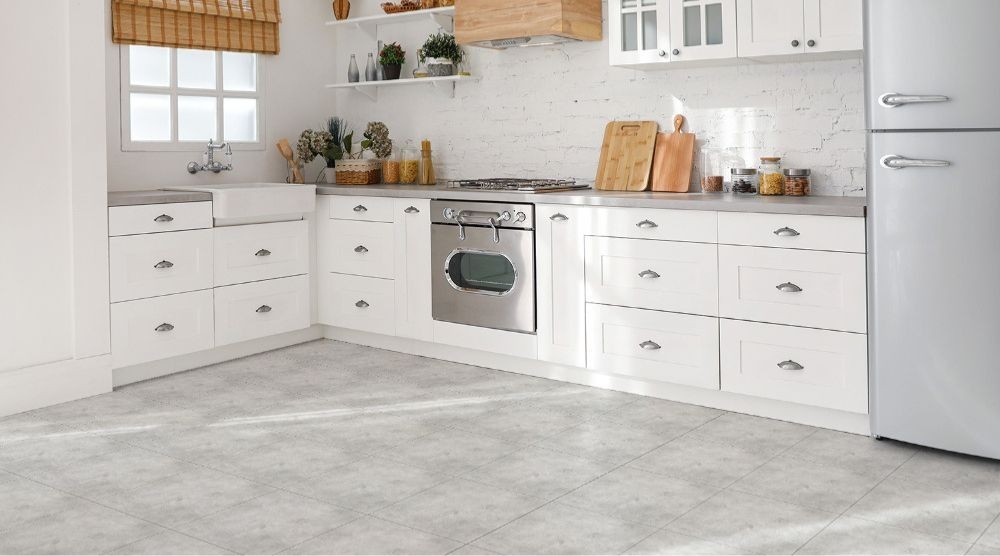
Advantages and disadvantages of concrete flooring in the kitchen
- Resistance to moisture and dirt - the surface of concrete and microcement is non-staining and easy to clean.
- Minimalist, modern look - it blends well with wood, glass and metal, giving the interior a raw character.
- No joints or gaps - the floor has a smooth surface, which makes it easy to clean and prevents dirt from collecting on it.
- Can be cold - like ceramic tiles, concrete does not retain heat, so consider underfloor heating.
- Requires proper preparation - before applying microcement, the substrate must be perfectly even and properly protected.
- Hard surface - a fall of a glass vessel on a concrete floor almost always ends up breaking it.
Comfort and aesthetics - how to match the floor to the style of the kitchen?
The kitchen floor is not only a matter of functionality, but also of style. The right material can emphasize the character of the interior, giving it a classic, Scandinavian, industrial or rustic look. What kind of flooring is best suited to different arrangements?
- Classic elegance - wood and its imitations - for lovers of timeless style, the best choice will be a floor lined with wood or vinyl panels, which perfectly imitate wood. Exotic wood will work better in the kitchen than traditional planks, as it is more resistant to moisture.
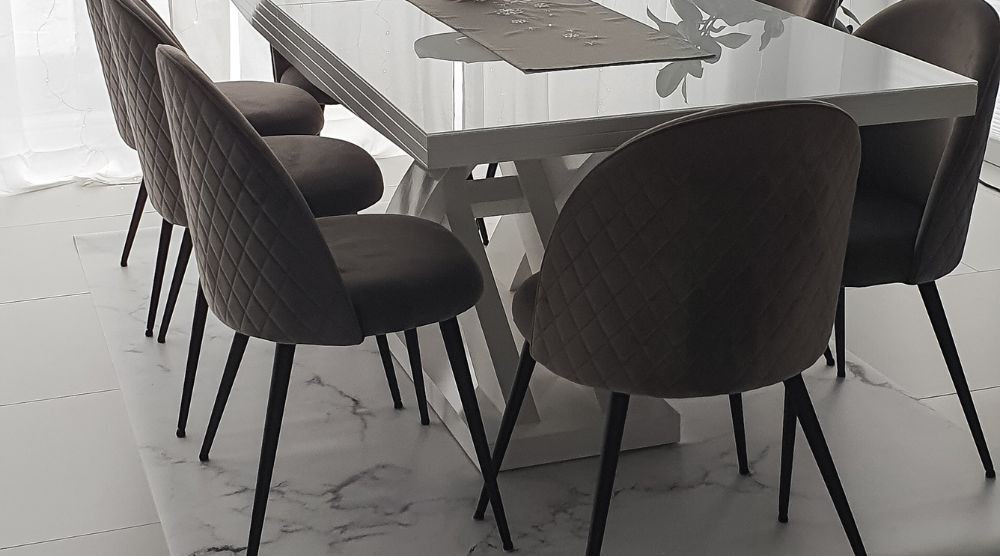
- Modern flooring - concrete, large-format tiles and granite-quartz conglomerates - modern interiors are dominated by large-format tiles, micro-cement and granite-quartz conglomerates, which are easy to clean and resistant to UV rays. Thanks to their smooth surface, they look elegant and minimalist.
- Rustic coziness - matte tiles and natural materials - if you want a warm, cozy interior, matte tiles, imitation stone and natural materials are a hit. It is worth betting on bright colors, which will optically enlarge the space.
Finishing the floor in the kitchen - what is worth paying attention to?
Choosing the right material for the kitchen floor is a decision that affects everyday comfort, the aesthetics of the interior and the durability of the finish. What kind of flooring is best for the kitchen? It all depends on your preferences and the style you want to achieve.
Regardless of your choice, it is worth remembering that the kitchen floor requires proper preparation, and the use of cleaning products should be tailored to the type of material. Careful use of chemicals, regular maintenance and attention to detail will make your floor beautiful and durable for years to come!



